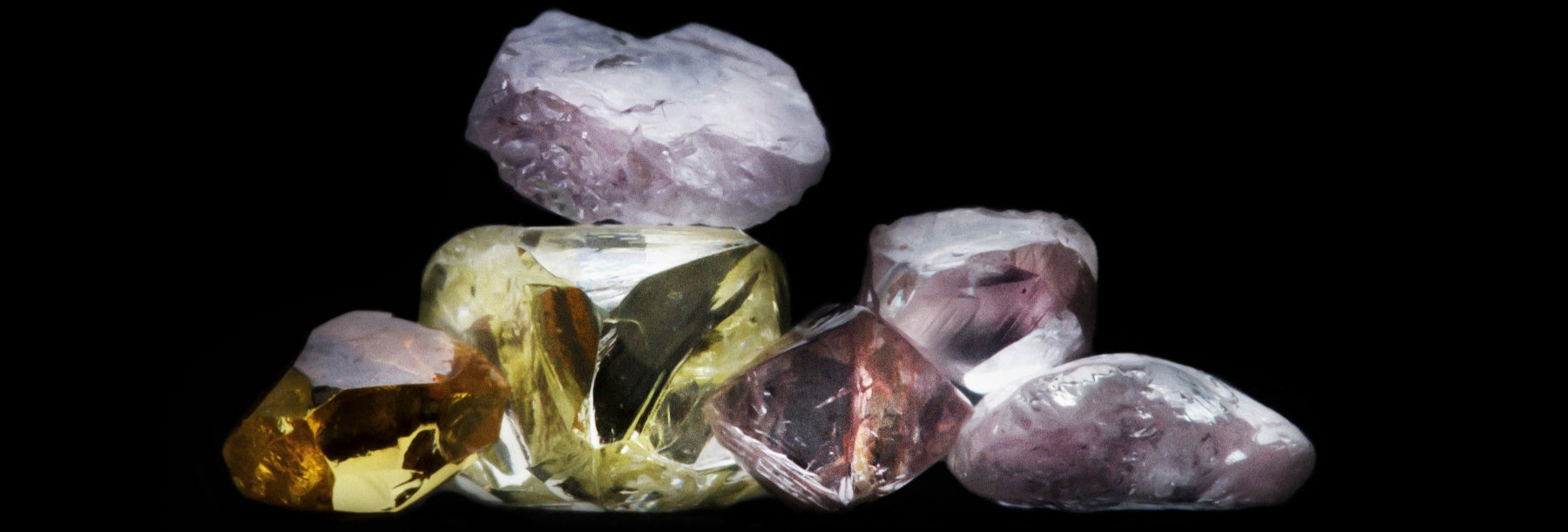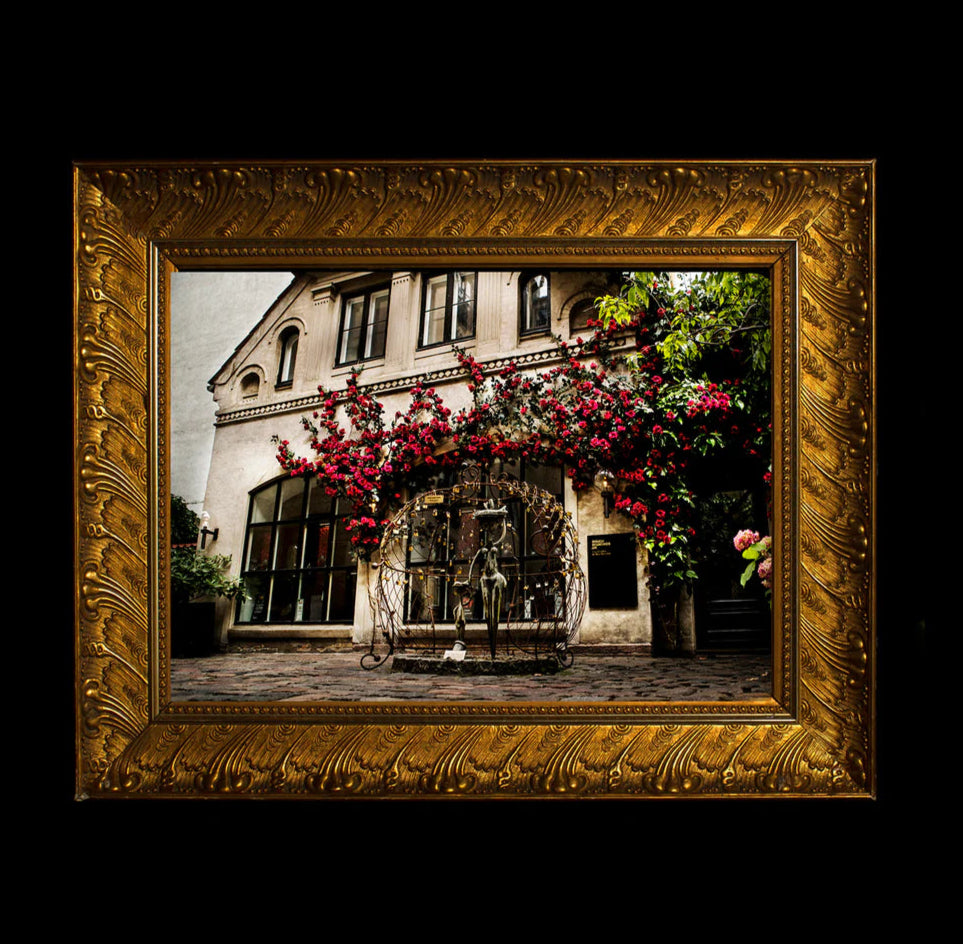Complimentary insured worldwide shipping
Natural Diamonds Vs. Lab Grown

Lab grown diamonds vs natural diamonds
Throughout history, humankind has always strived to copy, imitate, and surpass nature. Diamonds are no exception to this ambition. Using advanced machines and intricate methods, scientists are able to create lab grown diamonds that have all the qualities of natural diamonds.
But are lab grown diamonds actually real diamonds – and what are the differences between natural and lab grown diamonds? This entry will guide you through what you need to know about lab grown diamonds. You’ll also learn why Maya Bjørnsten, designer and founder of RoughDiamonds.dk, prefers natural diamonds to lab grown diamonds.
What is a lab grown diamond?
In nature, it takes millions of years for diamonds to form. Natural diamonds are created through exposure to extreme forces of heat and pressure deep beneath the surface of the earth. They travel towards the surface where they are mined. Finally, they are cut and polished – unless, like us, you prefer to love them in their natural, raw form.
Lab grown diamonds are, as the name suggests, created in a controlled laboratory environment. Here, the process which would naturally take millions of years can be completed in a matter of months.
A lab created diamond is made using one of two popular methods:
Chemical Vapour Deposition (CVD)
In this method, a ‘seed crystal’ – a very small diamond seed – is placed within a small chamber. Next, the chamber is filled with gases which are then heated. When the gases reach the right temperature, layers of carbon start to form on the seed crystal. This causes the seed to grow – and a square-shaped diamond crystal is created.
High Pressure High Temperature (HPHT)
This method seeks to replicate the process by which natural diamonds form within the earth. In this method, natural graphite is placed within a large machine. This machine then crushes the graphite with extreme pressure and temperatures. The high pressure and temperature causes the graphite to turn into a diamond.

Are lab created diamonds real diamonds?
It may be hard to believe, but the answer is yes: lab grown diamonds are real diamonds. They contain the same chemical and physical attributes as natural diamonds.
Lab grown diamonds also have shape, size, colour, and clarity grades. And just like natural diamonds, they receive certification through the Gemological Institute of America (GIA) and the International Gemological Institute (IGI). And once lab grown diamonds are cut and polished, the optical differences between the two types of diamonds can’t be seen with the naked eye at all.
One of the signifiers gemologists look for when identifying the origins of a cut diamond is whether the gemstone contains nitrogen. Natural diamonds contain tiny amounts of nitrogen, whereas lab grown diamonds contain no nitrogen.
Although the two types of cut diamonds are the same in most ways, natural diamonds have a rarity factor which lab grown diamonds do not. There is a finite supply of natural diamonds, whereas lab created diamonds can be produced.
This means that a natural diamond will generally hold its value better than a lab grown diamond – and it also means that the prices of lab grown diamonds are approximately 30-50% less than those of natural diamonds. However, this does not make lab created diamonds any less real.
So if lab grown diamonds are just as real as natural diamonds – and they’re more affordable as well – why should you choose natural diamonds over lab grown ones?
At RoughDiamonds.dk, our answer to this question is quite simple. Natural diamonds are exactly that: natural.

Why we prefer natural diamonds to lab grown diamonds
There are several reasons why we prefer natural diamonds to lab grown ones. Their financial value is not one of them. In founding RoughDiamonds.dk, designer Maya Bjørnsten has created a celebration of nature. And to us, nature is the most valuable thing of all.
Natural diamonds are part of the history of our world. They were created by nature millions of years ago, and in their rough, uncut, and unpolished state, they are the prime example of the inherent beauty of the natural world. This is why we work with rough diamonds.
And here is a crucial difference between the two types of diamonds: in their rough state, natural diamonds and lab grown diamonds are not the same at all.
Due to the different growth conditions in which they form, there are certain properties that rough natural diamonds have which rough lab grown diamonds do not. One of the most notable ones is their shape.
Most natural diamonds grow as octahedral crystals, meaning that rough natural diamonds possess eight equilateral triangular faces. Lab grown diamonds, on the other hand, grow with both octahedral and cubic (six equivalent faces). CVD diamonds grow with only cubic faces, while HPHT diamonds typically display a combination of cubic and octahedral faces.
Another feature of natural diamonds is trigons: triangular patterns that are found exclusively on octahedral faces. Although HPHT diamonds do possess octahedral faces, trigon growth on synthetic octahedral faces is very rare. This makes these shapes a feature almost exclusively associated with natural diamonds.
This is why we prefer natural diamonds to lab grown diamonds. Their beautiful shapes and patterns are ingeniously designed by Mother Nature herself, making each rough natural diamond truly unique and an honour to work with.
In choosing a rough diamond ring from our collection, you’re choosing a piece of the history of the natural world. You’re choosing a piece of art expertly crafted by nature. And you’re choosing a story that began well before human beings walked the earth – and in collaboration with Maya Bjørnsten, you’re writing its next chapter.
Celebrate the inherent beauty of nature with rough, natural diamonds
Now that you know the differences between lab grown diamonds and natural diamonds, we hope that you feel inspired to celebrate the beauty of the natural world: uncut, unpolished, and perfectly imperfect.
If you’re looking to choose a little piece of the natural world for yourself, you can browse our collection of raw diamond rings here. You can also select your very own raw, natural diamond and collaborate with designer Maya Bjørnsten and our team of expert goldsmiths to create a bespoke, one-of-a-kind piece.
To keep up with our work, visit our Facebook and Instagram pages and let yourself be inspired by the beauty of natural diamonds in their uncut, unpolished form.


